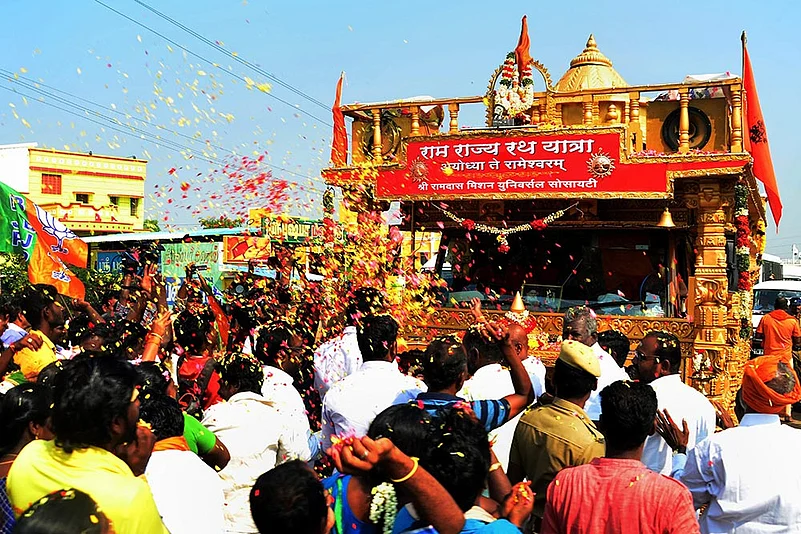
Ram Mandir
Like it has been in the past thirty years, Ram Mandir and the Ayodhya dispute continued to be the refrain in the Indian political discourse this year. In September, the Supreme Court rejected a plea by Muslim petitioners seeking that the case be referred to a larger bench. In the subsequent month, the SC bench led by CJI Ranjan Gogoi dismissed a request by the UP government for an early hearing in the case. The bench, which was hearing a bunch of petitions challenging the Allahabad HC verdict, said the court has its own priorities. The said HC had in 2010 ruled that the disputed site be divided between the Ram Lalla, represented by VHP, Nirmohi Akhara and Sunni Waqf Board. The Hindu right exhibited discontent with the court’s dismissal of expedition request. Later, in the run-up to the assembly elections in Rajasthan, Prime Minister Narendra Modi blamed the Congress for causing fear among the judiciary with the intention of delaying the hearing in the case. In addition, RSS chief Mohan Bhagwat, while addressing a rally organised by VHP in Ayodhya, said that the time for patience was over and the government must bring a law for the construction of the temple.

Farmers March For Relief
The year was marked by major farmers’ protest marches, with three prominent ones happening in the capital New Delhi and one taking place in Mumbai. Distressed by the agrarian problem, thousands of farmers marched from Nasik to Mumbai in March this year, and camped outside the legislative assembly. Farmers, under different banners and in large numbers, rallied to Delhi in September, October and November too. The demands were unconditional loan waivers and increased minimum support prices for their crops. In the October march, the Delhi police cracked down on protestors with batons, water cannons and tears gas shells. The November protest, organised by the All India Kisan Sangharsh Coordination Committee (AIKSCC), was addressed by Rahul Gandhi, Arvind Kejriwal and other opposition leaders. The coalition of farmer outfits was formed after the Mandsaur firing incident of June 2017. Six farmers were killed when police opened fire on peasants protesting a fall in prices in Madhya Pradesh’s Mandsaur. Another of the foremost demands of farmers has been the implementation of the Swaminathan Commission report that recommends the fixing of the MSP at 1.5 times the cost of producing the crop.

Hand Into Fist
Spring follows winter; defeat trails victory…can it be the other way round as well? That timeless rhythm in reverse fit into the Indian political context in 2018, especially for the big two—the BJP and the Congress. The BJP ruled 21 states—either by itself or as part of an alliance—after it saffron-washed the Tripura assembly polls this spring, conquering a CPI(M) outpost of 25 years. These states add up to more than 70 per cent of India’s population; a kind of self-assuring muscle to insulate the party for a winter test. It lost some weight in summer when its coalition government in Jammu and Kashmir crumbled, though the confidence of partywallahs stayed unspoilt. Ah! If only there’s a machine to freeze time and the nature of causality. The chill barrelled down in December. The BJP lost Madhya Pradesh and Chhattisgarh in state elections—losing to a resurgent Congress a large slice of the Hindi heartland it had ruled for 15 years. And Rajasthan tiptoed back to the Congress—after five years of BJP. The losses are a pinprick numerically, but the cut is deep; not to be trifled with. If it heals on time, 2019 promises a cracker.
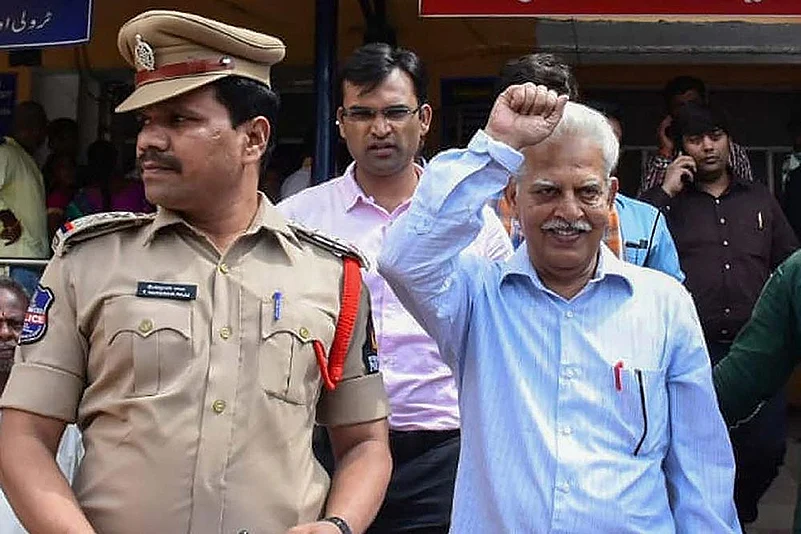
‘Urban Naxals’
Five academics— Varavara Rao, Vernon Gonsalves, Arun Ferriera, Sudha Bharadwaj and GauTAM Navlakha were arrested by the Maharashtra police in a coordinated action in August this year over alleged Maoist links. The affidavit filed by Maharashtra government alleged that they were conspiring to unleash largescale violence. It also alleged that they instigated violence during the Bhima Koregaon gathering last year in December, which was backed by the banned Communist Party of India (Maoists). Their arrests sparked outrage from civil society, resulting in protests across the country demanding their release. Several activists, led by eminent historian Romila Thapar, filed a petition in the Supreme court demanding the release of the arrested activists and the formation of an SIT to probe the case. The SC directed that the activists be kept under house arrest. They were initially placed under house arrest, but currently, except for GauTAM Navlakha, all are in police custody.

Kerala Floods
In August this year, Kerala was hit by the most severe floods in nearly a century, resulting in over 483 deaths and forcing the evacuation of around a million people. Heavy monsoon rainfall—about 75 per cent more than the usual level—had filled the state’s dams to capacity, and 35 of these 54 dams had to be opened. The floods and attendant landslides wrought great physical ruin, with tens of thousands of homes, vast stretches of road and other infrastructure damaged or destroyed. The fightback saw a great influx of charitable donations, and masses of volunteers from within and beyond the state rallying to the cause and undertaking the titanic task of organising, transporting and distributing aid that was pouring in, in addition to the efforts of the armed forces and state bodies. Fishermen were hailed as the heroes of the hour as they conducted rescue operations with their boats. The struggle was widely seen as having created a moment of unity among the people, helped along by an undoubtedly social media-savvy state government.

Rafale Nosedive
The Rafale row, which started when Rahul Gandhi made allegations of corruption and cronyism against PM Narendra Modi in November 2016, remained a major newsmaker all through 2018. Rahul had raised questions regarding the price of jets and on Reliance Defence Limited being chosen as the offset partner of Dassault Aviation over the state-run aerospace giant Hindustan Aeronautics Limited. The Modi government signed a deal with France for 36 jets, with each costing Rs 1,600 crore, Gandhi alleged, while the price of a Rafale jet in the proposed UPA deal was Rs 526 crore. Several PILs were filed against the NDA government in the Supreme Court, following which the SC asked the government to submit details of the decision-making process of the deal. After the government’s submission, the SC in December dismissed all the PILs. Referring to a CAG report in it’s judgment, the SC said it has been examined by the Public Accounts Committee. PAC chairman Mallikarjun Kharge, however, claimed that the report was never presented to them. This sparked a fresh controversy, forcing Defence Minister Nirmala Sitharaman to hold a press conference in which she stated that the CAG will file the report, which will then be presented to the PAC. The Centre applied to the SC for a rectification. Amidst this, opposition leaders, including Rahul Gandhi, have demanded that the SC take its judgment back and have launched a fresh attack, questioning the credibility of the CAG report, which is yet to be presented to the PAC.
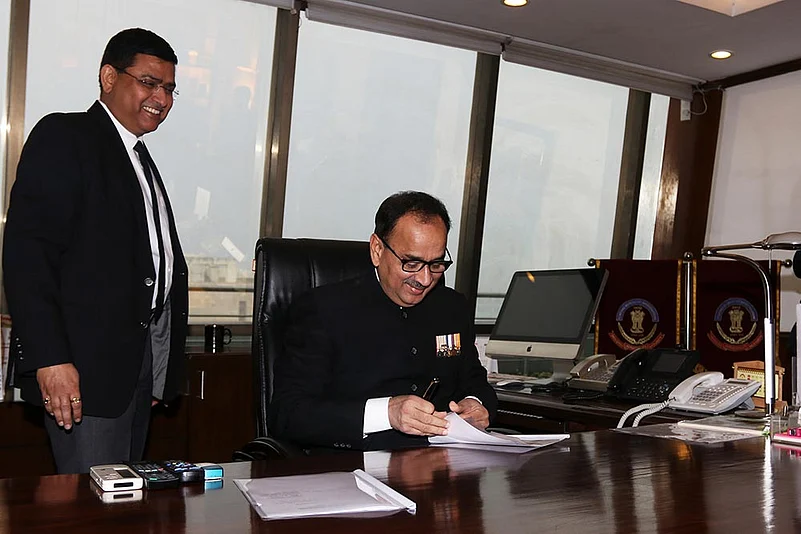
CBI Infighting
The tussle between the CBI’s then number one and two, director Alok Verma and special director Rakesh Asthana came to such a head that a CBI team raided its own headquarters on October 24. It all started when Asthana was appointed as special director in 2017, with Verma objecting to the former’s appointment to the CVC. Verma was then accused by Asthana of going easy on cases involving RJD chief Laloo Prasad Yadav. On October 21, the CBI charged Asthana with accepting a bribe of Rs 2 crore by Moin Qureshi, the meat-exporter already under the ED’s lens. A day later, DSP Devender Kumar was arrested by his own organisation, owing to the bribery charges. Two days later though, the Centre sacked Verma and appointed M. Nageshwar Rao as the Interim CBI director.

Change In RBI
While economists predicted great rumblings in the Reserve Bank of India at the time of demonetisation, Urjit Patel quit his job as the RBI chief just over two years later, in December this year. Patel cited ‘personal reasons’ for leaving, but it is believed that it was the constant interference of the Centre in the apex bank’s workings that led to him resign. Patel was replaced instantly—just a day after he resigned—with Shaktikanta Das, an IAS officer who has consistenly and vociferously backed the note-ban. Das, a former economic affairs secretary at the Union ministry of finance, has been given a three-year term as the RBI governor.

A CWG High For India
India turned in their best Commonwealth Games performance since 2010, when they hosted the quadrennial event in New Delhi. Overall, it was the country’s third-best performance in CWG history–both in terms of number of gold medals and total medals won—since they first competed in 1934. In Gold Coast, Australia, India won 66 medals, including 26 gold, to finish third, though much behind toppers Australia (198 medals) and England (136). One of the stars was the ageless boxer M.C. Mary Kom, who clinched the women’s light flyweight (48kg) gold. Shooter Manu Bhaker, one of brightest stars to emerge from Khelo India, and paddler Manika Batra, who won two gold, a silver, and a bronze, were the others who shone brightly. Towards the end of the year, 35-year-old Mary Kom, a mother of three boys, won a record sixth World Championships gold (48kg), in New Delhi. She thus equalled the world record of Cuban legend Felix Savon, who had won six gold in the men’s heavyweight division. Mary Kom has now set her sights on the 2020 Tokyo Olympic Games.

NRC Controversy
The citizen-outsider question loomed disturbingly over Assam for decades, creating an air of perpetual uncertainty, even resulting in violent outbursts. Many looked at the government from this state for an ultimate answer. The National Register of Citizens was meant to provide that. But the task would be humungous—doing a background check of each and every person suspected as an ‘outsider’. On top of that, politics in the state started being defined by the possibility of such a survey. After a first draft released on December 31 last year, it finally happened: The NRC released its final draft in July this year. It took 63,000 people three years to complete the process of the citizen survey at a cost of more than Rs 1,200 crore. The register left out 40 lakh people, but they weren’t declared non-citizens straightaway. They have a chance to prove their citizenship again.

Sabarimala Face-Off
If the previous month’s floods had brought Malayalis together, the crisis occasioned by the September 28 Supreme Court judgment on Sabarimala would tear this unity to ribbons and perhaps inflict a serious wound on Kerala’s collective psyche. A 4-1 ruling by a Constitution bench overturned a ban on women between the ages of 10 and 50 worshipping at the hill temple of Sabarimala, a major pilgrimage centre. Acrimony followed, with protest marches aiming to ‘save Sabarimala’ and defend tradition; the protesters included large numbers of women. When the temple opened for the first time after the judgment, there was violence as wooden cub-wielding sentinels defended tradition, and no women made it to the shrine—and further controversy was stirred up over non-Hindus being among those that had tried. The issue has caused political polarisation, with the CPI(M)-led state government being staunch in its stand of trying to implement the ruling, while both the BJP—which had initially supported the judgment, before making a quick 180 when it saw which way sentiment lay—and the Congress against it.

Supreme Court Judges Speak Up
The beginning of this year saw an unprecedented event, when four senior sitting judges of the Supreme Court came before the press to state that “the administration of the SC was not in order”. The four judges were J. Chelameswar, Madan B. Lokur, Ranjan Gogoi and Kurian Joseph. They had resorted to ‘coming out’ like this after their concerns about the state of affairs in the SC, marked in a letter and dispatched to then CJI Dipak Misra, were not addressed in an adequate manner. The uneasy footnote to this judicial controversy is the case of Judge Loya’s death, the narrative of which involves the BJP president as a central character. It seemed like the dissenting judges were not happy with the way the CJI had dealt with that case and couldn’t stay quiet about it. Speaking of silence, many media houses too have maintained a ‘safe’ distance from the Judge Loya controversy.

Putin’s Great Game
Controversy continued to shadow Vladimir Putin in 2018…why the man positively revels in it! On March 4, Sergei Skripal, a former Russian military intelligence officer and double agent for the UK, and his daughter Yulia were poisoned at their home in Salisbury by the Russian-made, dangerously potent nerve agent Novichok (A-234). As an MI6 probe gathered steam, the GRU (Russian military intelligence) was held responsible. CCTV cameras caught two strangers on the day, later identified as Alexander Petrov and Ruslam Boshirov (alleged aliases of GRU men) who returned to Moscow that very same day. A full diplomatic row ensued: over 100 Russian diplomats were expelled by the UK, retaliated by Moscow. Putin, believed to be behind the act, denied everything, accusing the West of colluding yet again of tarnishing Russia, but expressed his utter contempt for Skripal.
Ukraine, a NATO member lying at Russia’s doorstep, has always commanded Putin’s attention. He annexed Crimea in 2014 (with ethnic Russian support, bolstered by a ‘referendum’ to cover up a military intervention straight out of dictators’ playbook) and sparked a civil war in eastern and southern Ukraine. In its fifth year, over 10,000 people have been killed and millions displaced. On November 25, Russia escalated the situation in the Kerch strait, the waters that separate Crimea from eastern Russia, between the Sea of Azov and the Black Sea, when its naval ships rammed and fired upon small Ukrainian warships, ultimately seizing them. Analysts say it’s Kremlin’s attempt to “restrict access from Ukraine’s eastern ports to the Black Sea, and thence to the Mediterranean and the world”.

Two Islands In Turmoil
Sri Lanka and Maldives have traditionally enjoyed cordial relations with India. But their geographical location along the important sea lanes in the Indian Ocean has increased the strategic importance of the two island nations. Both are seen by China as key players in its Maritime Silk Route and Belt and Road Initiative. China has made heavy investments and increased its presence there. These developments have not gone down well with India, as growing Chinese footprint in the two countries have allowed their leaders to bargain a hard bargain with India during key negotiations. The sacking of Ranil Wickremesinghe as PM by President Maithripala Sirisena to instal Mahinda Rajapaksa had led to a long phase of political instability in Sri Lanka. Wickremesinghe’s reinstated as PM has for the time being has marginalised pro-Chinese Rajapaksa. But India’s wise decision to allow the political dynamics with Sri Lanka to play out has allowed New Delhi to remain a relevant player. Things might change, however, as presidential polls due for next December gets nearer. But it is the development in neighbouring Maldives that was more interesting for India. After being overlooked by the previous regime of Yameen in favour of China, India is back as ‘number UNO’ in Male, with Ibrahim Solih’s becoming president. However, how Male deals with the heavy investment made by China in the Maldivian infrastructure could be an area of concern for both Solih and his friends elsewhere. As of now, no single country would dominate the important sea lanes that pass through this crucial area.
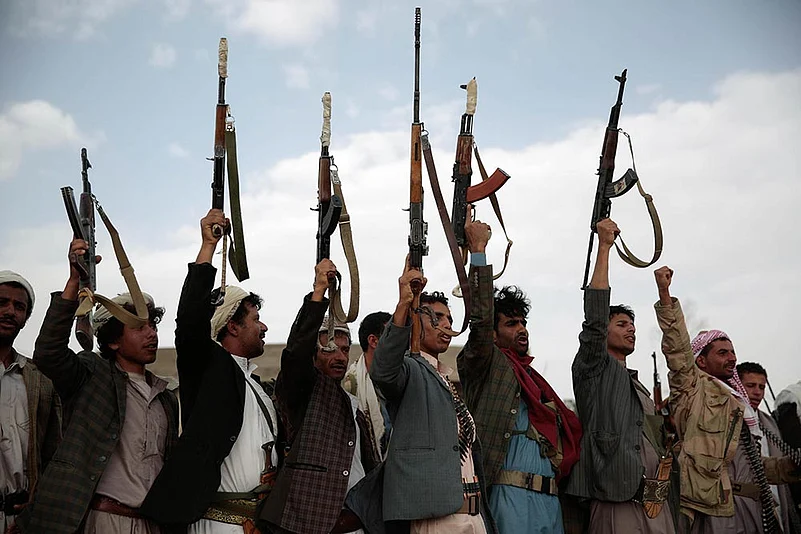
Yemen’s Pain
Some regional conflicts cause enough international outrage to prompt concerted action, like the Biafran conflict in the late ’60s, the Rwandan genocide in the ’90s or the civil war in Syria. Others, though widely reported as unfolding tragedies, are too geo-politically complex to merit ‘intervention’. The six-year-old civil war in Yemen is one of these. After president Ali Abdullah Saleh left office as part of a peace plan in 2011, the successor government of Abdrabbuh Mansur Hadi could barely fend off the twin threats of Al Qaeda and Iran-backed Shia Houthi rebels entrenched in north Yemen. The Houthis swept into capital Sanaa in 2014, toppled Hadi’s government and installed a revolutionary committee. Soon, as the Arab League, UN and the US criticised the Houthi takeover, Saudi Arabia started airstrikes on rebel territory, aided by the UK, US and France. Through all this, the plight of Yemen’s citizens was worsening. In November 2017, the coalition reacted to the launch of a Houthi missile towards Riyadh with a crippling blockade of Yemen, purportedly to halt smuggling of weapons by Iran to the rebels, a charge Tehran denies. The blockade precipitated a humanitarian crisis of biblical proportions—as thousands are killed, an estimated 13 million face starvation and are deprived of medical care in the face of the ‘worst cholera outbreak in recorded history’ that has killed 50,000 children. As the ‘world’s worst man-made humanitarian disaster’ enters a new year, UN-brokered peace talks this December in Sweden offer some hope, aiming to end the blockade of Sanaa airport and to open the Red Sea port of Hodeida for aid to reach suffering Yemenis.

Team India’s Continuing Tests
India had a forgettable year in Test match cricket in 2018. But Virat Kohli’s team can redeem itself somewhat if it beats a supposedly ‘weak’ Australia in the ongoing four-match series Down Under. With two Tests to go, the series stands at 1-1. In shorter formats, however, India performed better, winning 14 ODIs, including lifting the Asia Cup, and losing four. In T20s, too, India won 14 matches and lost four. The only Test series India won during the year was against a clearly weak West Indies side that toured India for a two-Test series—the hosts registered thumping wins in both. Apart from that, and the win in the first ever Test against Bangladesh on Indian soil, the team doesn’t have much to show. The 1-4 thrashing India received at the hands of hosts England was the worst performance of the year. To be fair to Kohli & Co., ten Tests were played outside India and only three at home.

Name Bane
It’s a time of renewal, rebirth...renaming. Several prominent places in the country have had their names changed in the past year to somewhat saffron-tinged alternatives. By fiat of Uttar Pradesh’s Yogi Adityanath-led government, Allahabad is now Prayagraj, a name derived from the old holy site of Prayag, where the Ganga and Yamuna meet—a controversial move to say the least, but many, including media organisations, have been remarkably quick in accepting it. Other ex cathedra pronouncements from the same source have turned Faizabad district into Ayodhya, Mughalsarai Junction into Pt Deendayal Upadhyaya Junction and Lucknow’s new Ekana Cricket Stadium into the mouthful that is the Bharat Ratna Atal Behari Vajpayee Ekana Cricket Stadium. The successes of their colleagues in UP have inspired similar rumblings from governments elsewhere, with the perennial prospect of Ahmedabad being renamed Karnavati resurfacing, Shimla threatening to metamorphose into Shyamala (isn’t that the auntie next door?), one BJP legislator in Telangana offering to rename Hyderabad ‘Bhagyanagar’ if his party came to power (an offer that was emphatically rejected at the ballot box) and even the Hindu Mahasabha wading in to propose that Meerut become Godse Nagar.

Talking Giants
The simultaneous rise of India and China within the same geographical space is bound to lead to occasional brush-offs. But a 73-day standoff with soldiers of the two countries standing on Bhutan’s Doklam plateau last year did create a serious scare. Many thought a war between the two nuclear neighbours was inevitable. But leaders of the two countries showed exemplary maturity in defusing the situation. That also led to a one-to-one meeting between President Xi Jinping and Prime Minister Narendra Modi in China’s Wuhan this spring. Its significance was not lost on either side or independent observers as a reset in Sino-Indian ties was long overdue since Rajiv Gandhi-Deng Xiaoping’s historic 1988 meeting. Wuhan allowed the two leaders to address all issues between the two sides and put in place an understanding that will allow the rise of both countries, often through cooperation. But as long as Pakistan remains a close Chinese ally, can a proper partnership between Beijing and New Delhi take place?

Imran Takes Charge
Cricketing icon-turned-politician Imran Khan’s victory in the August parliamentary election and subsequent choice as Pakistan’s prime minister was not unexpected. For over a decade, Imran and his Pakistan Tehreek-e-Insaaf had been positioning himself as the future face of Pakistan. Corruption of Pakistani politicians, particularly that of Nawaz Sharif, helped in highlighting Imran’s clean image. Many feel what the PTI leader achieved was due to the Pakistani army’s backing. But faced with an economic crisis and deteriorating bilateral relations with the US has plunged Imran in a deep spot. His attempt at improving ties with Washington seems to have been working, with Pakistan’s ability to deliver the Taliban for direct talks with the Americans in stabilising Afghanistan. However, despite his liberal image, the ambiguity on terror outfits operating from Pakistan against India has failed to kick-start the stalled talks between the two. His dream of creating a “Naya Pakistan” may have to wait.

Long March And Hunger Pangs
Venezuela has the largest oil reserves in the world, but that led to its undoing. In the past two decades under Hugo Chavez and Nicolas Maduro, the country invested on, or produced, little else. Oil revenues accounted for 95 per cent of export earnings and paid for subsidies for the country’s millions of poor. When oil prices fell in 2014, Vebezuela’s economy entered a freefall—hyperinflation, powercuts, food and medicine shortages—that erupted in 2018. As food queues grew long and empty shelves greeted people, the crumbling infrastructure gave way, resulting in crippling water and power shortages. The inflation rate reached 83,000 per cent in July 2018, and prices doubled every three weeks. All this drove 7 per cent of the population (2.3 million people) out of the country, to Colombia, the US, Mexico, Ecuador, Peru and Spain—“one of the largest forced displacements in the western hemisphere”.Measures such as increasing the minimum wage rate and a new ‘sovereign Bolivar’ with less zeroes on it have stanched the crisis for now. In another, smaller—though no less miserable for that—migration, over 7,000 central American migrants are now at the US-Mexico border after travelling 4,000 km, mostly on foot, from Honduras, Guatemala and El Salvador—countries with the highest crime rates in the world. They flee persecution, poverty and violence, in the hope for a dignified future for their families. Their goal: a new life in the US. They face US border guards determined not to let them in, and a president who termed their gruelling march “an invasion”.
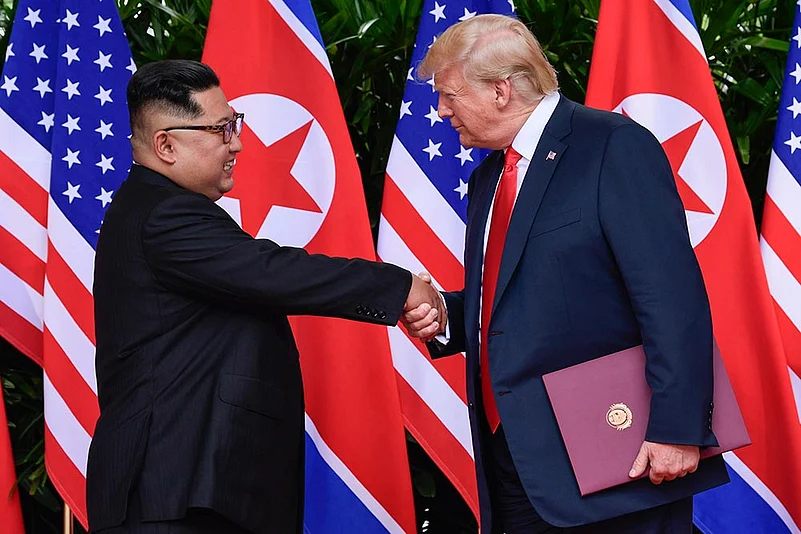
Long Blow At The Trumpet
The first year of Trump’s presidency was marked by a spirited joust with North Korea. Every N. Korean missile launch was matched by the US sanctions and reprimands. Kim Jong Un, Trump’s ‘little rocket man’, wasn’t cowing down. Then, unbelievably, with attempts by S. Korea, came rumours of a thaw, even talks. Still more amazingly, the two leaders met for a summit on June 12 in Singapore. Kim vowed to denuclearise the Korean peninsula; Trump moved to suspend US-S. Korea joint military exercises. However, tensions arose in December, when the US placed sanctions on three top officials accused of human rights abuses. In May, Trump withdrew the US from the pathbreaking Iran nuclear deal of 2015, calling it “decaying and rotten”, thereby antagonising his NATO allies further. The US reimposed its crippling sanctions on Iran, which vows a return to Uranium enrichment. In December, Trump announced pulling out all US troops from Syria, and 7,000 soldiers from Afghanistan, shocking European and other allies. In the crucial US midterm elections, the most high-profile in decades, Trump led a typically polarising campaign. The results showed the true state of the US—a deeply divided nation. The Democrats took control of the Congress, seen as crucial to rein in a rampaging president, while Republicans hung on to a narrow senate majority. Trump also snarled at Pakistan, to the muted delight of India, and reaffirmed his plan to build his cherished ‘wall’ along the US-Mexico border to keep out migrants. The major domestic scandal Trump had to face was the alleged non-disclosure agreement signed by adult filmstar Stormy Daniels and Trump’s personal lawyer Michael Cohen just before the 2016 presidential elections. When, in January, questions were raised if it was an illegal campaign payment, Cohen admitted payment (out of personal funds), but denied the affair. Yet his previous defence of Trump caught up with Cohen—in October he pleaded guilty to charges including tax evasion and lying to authorities. The president got away clean, but his hatchet man could not—on December 12, Cohen was sentenced to three years’ imprisonment.

A Dissident Vanishes
On October 2, Saudi dissident journalist Jamal Khashoggi, a US resident, walked into the Saudi embassy in Istanbul. He never came out. In the following days, spearheaded by Turkey—who wasn’t going to let go the opportunity to excoriate its regional foe, the Saudi regime—a huge international furore broke out. Turkey mounted a probe, and through regular leaks to the media the world got to know about a plot most heinous: A Saudi hitsquad had arrived in Istanbul just before Khashoggi made his appearance, and then tortured and killed him, all, allegedly, on the orders of the autocratic Saudi crown prince Mohammed bin Salman. The method used was grisly in extreme—Khashoggi was asphyxiated, his body “dismembered by a saw” and then the parts “dissolved in acid”. In the initial days, Saudis flats denied involvement; then, diplomatically snubbed by the West, shamefacedly blamed the murder to a ‘rogue’ group and launched a probe for show. Khashoggi’s family in Saudi Arabia met the king and MBS in a royal show of commiseration. Throughout the storm, Donald Trump wouldn’t condemn the US’s oil-rich, all-weather friend; he even proved slippery on that count when the CIA confirmed Turkey’s findings and laid the blame on MBS. Yet, even Trump couldn’t break ranks with other Western leaders when they cold-shouldered MBS at the G20 summit at Buenos Aires (Putin was there for a warm greeting though). One ironic highlight: Turkish President Recep Tayyip Erdogan’s solemn defence of media rights and journalistic freedom. After the failed coup against him in 2016, Erdogan hunted down and arrested around 150 journalists and shut down around 100 media organisations.
















